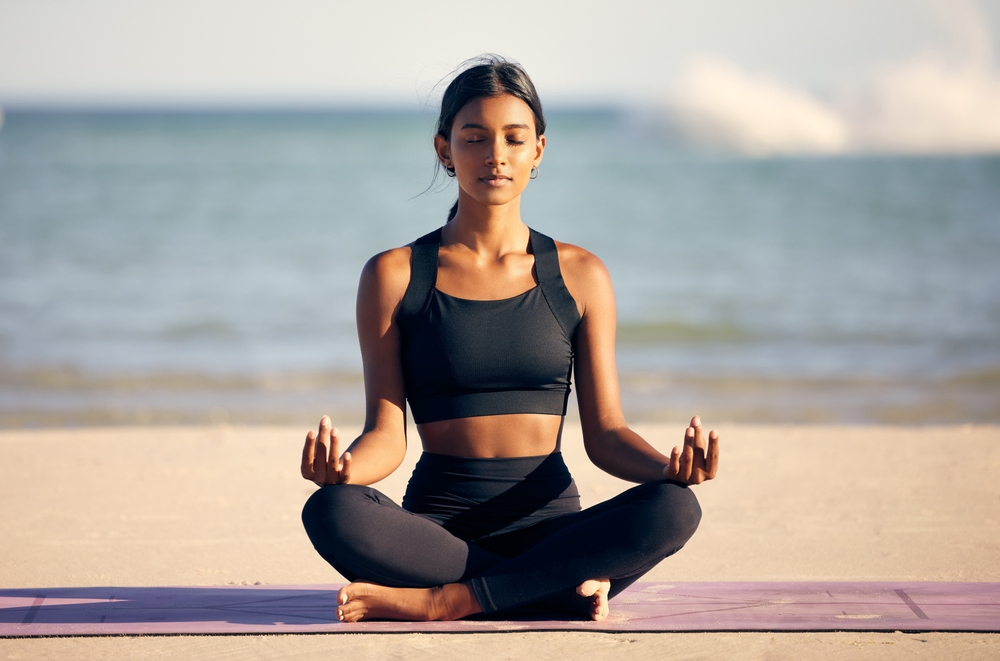Managing the obligations of job, education, and family duties frequently leaves people with little time for relaxation. The mindfulness practice stands out as a calm haven in the middle of this fast-paced environment. Mindfulness is more than just a fad; it’s a powerful tool for stress management that anyone can use, no matter how skilled they are. Let’s investigate this path to wellbeing with easy-to-understand exercises.
Deciphering the Fundamentals of Mindfulness
A state of being known as mindfulness emphasises awareness, or paying attention to one’s environment, feelings inside, and thoughts. It has multiple dimensions.
- Present Moment Concentration: Establishing a firm grasp on the present. Being aware of and appreciating one’s surroundings is known as environmental awareness. Recognizing and comprehending one’s own emotions and bodily sensations is known as internal sensation recognition.
- Acceptance of the Present: Having an open mind and accepting the circumstances as they are. Although mindfulness can be applied in many different contexts, it is helpful for novices to have some guidelines. Let’s dive into some mindfulness exercises to get started.

Activating the Senses: A Five Senses Task
One of the exercises that mindfulness enthusiasts most enjoy, this one fits easily into regular routines. Locate a peaceful area, open your eyes, and take in the scenery.
- Focusing on the visual components surrounding you, list five objects that you can see.
- Identify four sensations that you are aware of, such as the feel of your clothing, the pressure on your feet, or a light breeze.
- Three things to pay attention to are the sounds of rustling leaves, hum from appliances, and distant traffic.
- Observe two objects that challenge your sense of smell.
- Lastly, name one taste you can perceive. Breathe and pause, then resume your day, firmly rooted in the here and now.
The Raisin Exercise: The Art of Presence
The Raisin Exercise, which aims to increase awareness, promotes a deep relationship with an apparently ordinary object—the raisin.
- Take a close look at the raisin, observing its shapes, colors, highlights, and shadows as if you were seeing it for the first time.
- Examine the raisin’s folds, dips, and textures with your hands. Shut your eyes to enjoy a more tactile experience.
- As you explore the aroma of the raisin and take in its entire range of scents, use your sense of smell.
- Savor the moment when you bite into the raisin. Observe the various flavors and bodily sensations, cultivating mindful awareness.
Body Scan Exercise: Body Connection
With its variations, the Body Scan Exercise entails focusing attention sequentially on various body parts.
- Pay attention to your feet first. Recognize the temperature, pressure, and ground contact sensations.
- Proceed through your body gradually, observing the distinct feelings in each place. The exercise ends with a brief pause followed by deep breaths.
Morning Thought: Journaling With Attention
- Bring journaling back to life by adding mindfulness to it. Every morning, write in a free-form manner while letting your thoughts come to you.
- As an alternative, write down your goals for the day while logging your mental and emotional states. Feel both the inside and the outside of yourself, and identify any fears or hopes you may have.
Embracing Gratitude: Evening Meditation
Making a gratitude list every night is a powerful mindfulness practice for expressing gratitude. Think back on the day and list three or more things that went well, such as a rewarding work, a comfortable bed, or a delicious lunch.

Accepting Mindfulness as a Way of Life Rather than a Task
The flexibility of mindfulness is what makes it so beautiful. To develop conscious awareness, it is a practice that needs to be repeated; it is not a one-size-fits-all approach. These flexible exercises offer a taste of the benefits of mindfulness.
Enhancing the Routine: Essential Elements for Intentional Mindfulness
It Matters to Be Consistent: Being mindful takes practice; it is not a one-time event. Its benefits are multiplied when you are consistent in incorporating mindfulness into your everyday routine.
- Modify the Exercises: You are welcome to modify these exercises to your own specifications. Developing awareness is the key, so customize them to speak to your particular experience.
- Progressive Body Scans: As you get more comfortable performing body scans, try doing more advanced scans that concentrate on particular body parts or sensations.
- Walking with Mindfulness: Incorporate awareness into your motions. By focusing on your breathing patterns, the feel of your feet hitting the ground, and each stride, you can cultivate mindful walking.
- Breathing Awareness: Make conscious use of your breathing throughout the day. For a few moments, pay attention only to your breath. Notice how it naturally flows without trying to change it.
Resulting in Peace: An All-Inclusive Method
Mindful exercise leads to inner peace that goes beyond physical movement. It develops into an awareness of the present moment and brings serenity and peace to all aspects of life. Allow these exercises to accompany you on this mindfulness journey and help you become centred and at peace with yourself. You’ll discover that the advantages permeate every area of your daily life and go well beyond your exercise regimen if you practice consistency and intentional mindfulness.



